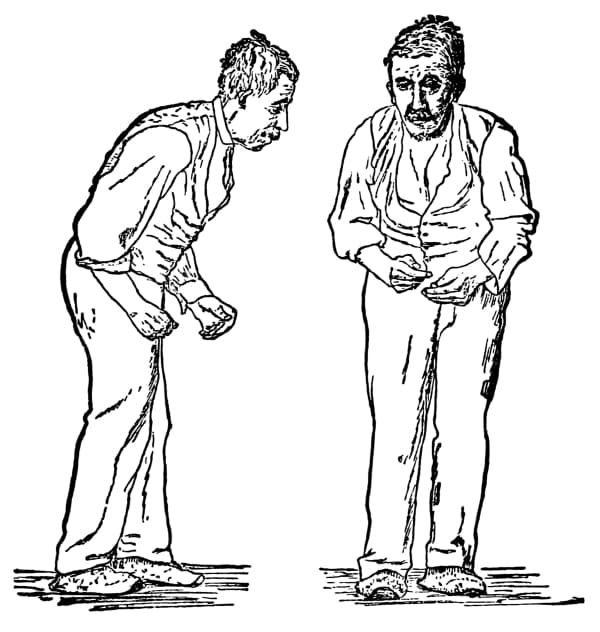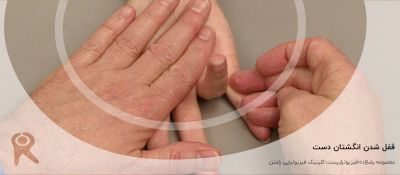PD is a disorder of the basal ganglia, which is composed of many other nuclei. The striatum receives excitatory and inhibitory input from several parts of the cortex. The key pathology is the loss of dopaminergic neurons that lead to the symptoms. It is the seconds most common neuro-degenerative condition in the world after Alzheimer's.
PD is a progressive disease with no cure. The lifespan is reduced compared to the general population. The rate of disease progression is hard to predict. In the later stages of the disease, falls, gait difficulties, and dementia are common. The quality of life for most patients with Parkinson's is poor.
Etiology
The condition is caused by the slow deterioration of the nerve cells in the brain, which create dopamine. Dopamine is a natural substance found in the brain that plays a major role in our brains and bodies by messaging, and therefore communicating across various systems.
The cause of PD has been linked to the
- Use of pesticides, herbicides, and proximity to industrial plants.
- After injection of 1-methyl-4-phenyl-1,2,3,6-tetrahydropyridine (MPTP) (An accidental finding). This chemical accumules in the mitochondria.
- Oxidation and generation of free radicals causing damage to the thalamic nuclei.
- Genes, risk of PD in siblings is increased, if one member of the family has the disorder. These cases also tend to occur much earlier in life.
- Altered function of alpha-synuclein may play a role in the etiology of PD. Current research is focussed on preventing the propagation and aggregation of alpha-synuclein
Epidemiology
- Parkinson’s most often occurs after the age of 50 and is one of the most common nervous system disorders of the ageing populations.
- PD affects 1 to 2 people per 1000 at any time. An estimated seven to 10 million people worldwide are living with Parkinson's.
- The prevalence increases with age to affect 1% of the population above 60 years.
- 5% to 10% of patients have a genetic predisposition.
- The incidence and prevalence of PD do increase with advancing age
- The condition is more common in men than women.
- In the UK, the prevalence of Parkinson's is 145,519 with an incidence of 18,461 in 2018.
Interprofessional Management
PD is one of the most common motor disorders worldwide. The disorder has no cure and is progressive. The condition can present with motor abnormalities and a variety of psychiatric and autonomic problems. Almost every organ is affected by this disorder, and as the disease progresses, management can be difficult. An interprofessional team approach is the best way to manage the disorder.
Some non-motor aspects (sleep problems, low mood, constipation and loss of sense of smell) occur several years prior to observable motor symptoms develop. Physiotherapists are most often involved in the mid stages of the condition, once balance and mobility become affected, but it can be helpful if they can assess and advise people soon after diagnosis in order to maintain activity and prevent problems.
Besides physicians, nurses, pharmacists, social workers, and physical therapists play a vital role in the daily management of these patients. Parkinson’s creates complexities for health and social staff helping individuals and those affected by it (carers, family members, friends). Managing these complex issues is a challenge due to the varied combinations of motor (movement) and non-motor symptoms presented throughout the course of the condition.
Common Motor Symptoms that Require Management
- Tremor is a prominent and early symptom of PD (not always present and is not a necessary feature for diagnosis).
- Slowness, or bradykinesia, a core feature of PD.
- Rigidity is the third prominent feature on examination.
- A combination of bradykinesia and rigidity leads to some other characteristic features of PD, such as micrographia.
- The fourth prominent feature of PD is gait disturbance, although this is typically a late manifestation. Flexed posture, ataxia, reduced arm swing, festination, march-a-petits-pas, camptocormia, retropulsion, and turning en bloc are popular terms to describe the gait in PD. Gait disorder is not an early feature of PD but is frequently described as it is easy to recognize and cinches the diagnosis in later stages.
Complications to Address
- Depression
- Dementia
- Laryngeal dysfunction
- Autonomic dysfunction
- Kyphosis leading to cardiopulmonary impairment
Prognosis
The rate of progression of the disease may be predicted based on the following:
- Males who have postural instability of difficulty with gait.
- Patients with older age at onset, dementia, and failure to respond to traditional dopaminergic medications tend to have early admission to nursing homes and diminished survival.
- Individuals with just tremors at the initial presentation tend to have a protracted benign course.
- Individuals diagnosed with the disease at older age combined with hypokinesia/rigidity tend to have a much more rapid progression of the disease.
The disorder: leads to disability of most patients within ten years; has a mortality rate three times the normal population.
Parkinson’s cannot yet be cured (treatment can improve symptoms but quality of life is often poor). A lot of financial and other resources are being expended on research to find a cure.
Differential Diagnosis
- Essential tremor
- Huntington chorea
- Dementia with Lewy bodies
- Progressive supranuclear palsy
- Neuroacanthocytosis
- Normal pressure hydrocephalus










